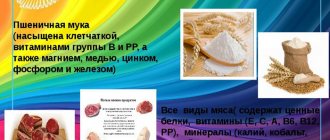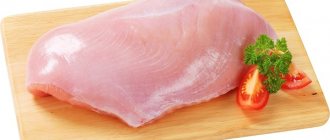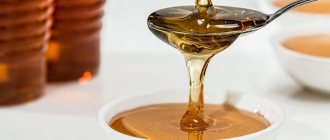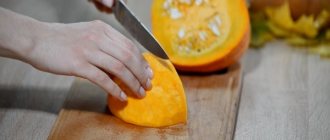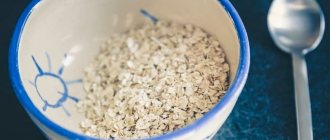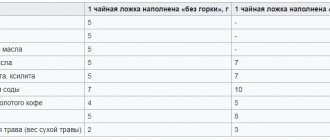It is very important for every housewife to know the ratio of products in grams and quantity. To make the calculation correctly and not make mistakes, you can read useful information on the website https://portalonline.ru/kulinariya/306-100-150-200-250-300-gramm-kartofelya-eto-skolko-shtuk.html.
Beneficial features
Potatoes, which are completely ordinary and familiar to everyone, are a storehouse of useful substances. Its rich composition contains a significant amount of proteins and phosphorus, as well as amino acids necessary for the functioning of the body.
Potatoes are famous for their high content of phosphorus and potassium. Potassium actively participates in metabolic processes, promoting the removal of excess fluid from the body. This property is useful for people suffering from heart and kidney diseases, whom doctors and nutritionists advise to follow a special potato-egg diet.
Nutritional value and health effects
Potatoes are underground tubers that grow on the roots of the potato plant, Solanum tuberosum.
It is a plant from the nightshade family, related to tomatoes and tobacco.
The potato, native to South America, was introduced to Europe in the 16th century and there are now countless varieties grown throughout the world.
They are usually eaten boiled, baked or fried and are often served as a side dish or appetizer.
Common potato-based products and foods include French fries, potato chips, and potato flour.
This article tells you everything you need to know about potatoes.
Boiled potatoes with their skins are a good source of many vitamins and minerals such as potassium and vitamin C.
Besides their high fresh water content, potatoes are primarily carbohydrates and contain moderate amounts of protein and fiber, but almost no fat.
The nutrients contained in 2/3 cup (100 grams) of boiled potatoes, cooked with skins on but without salt, are (1):
- Calories: 87
- Water: 77%
- Protein: 1.9 grams
- Carbohydrates: 20.1 grams
- Sugar: 0.9 grams
- Fiber: 1.8 grams
- Fat: 0.1 grams
Carbohydrates
Potatoes are primarily made up of carbohydrates, mainly a form of starch. Carbohydrate content ranges from 66–90% of dry weight (2, 3, 4).
Simple sugars such as sucrose, glucose, and fructose are also present in small amounts (5).
Potatoes typically rank high on the glycemic index (GI), making them unsuitable for people with diabetes. The GI measures how foods cause blood sugar levels to rise after a meal.
However, some potatoes may be in the average range, depending on the variety and cooking methods (6, 7).
Refrigerating potatoes after cooking can reduce their effect on blood sugar and lower their GI by 25–26% (8, 9).
Fibers
Although potatoes are not a high-fiber food, they can be an important source of fiber for those who eat them regularly.
The highest amount of fiber is found in the skin, which makes up 1-2% of the potato. In fact, the dried skin is about 50% fiber (10).
Potato fibers, such as pectin, cellulose, and hemicellulose, are mostly insoluble (11).
They also contain varying amounts of resistant starch, a type of fiber that feeds good bacteria in the gut and improves digestive health (12).
Resistant starch may also improve blood sugar control by curbing the rise in blood sugar levels after meals (13).
Compared to hot potatoes, chilled potatoes contain higher amounts of resistant starch (8).
Protein
Potatoes have a low protein content, ranging from 1–1.5% fresh to 8–9% dry (10, 14).
In fact, compared to other common food crops such as wheat, rice and corn, potatoes have the lowest amount of protein.
However, the protein quality in potatoes is very high for plants—higher than that of soybeans and other legumes (10).
The main protein in potatoes is called patatin, which can cause allergic reactions in some people (15).
SUMMARY
Carbohydrates are the main dietary component of potatoes. Cooled after boiling may contain resistant starch, which improves gut health. Potatoes also contain small amounts of high-quality protein.
Potatoes are a good source of several vitamins and minerals, especially potassium and vitamin C.
Levels of some vitamins and minerals drop during cooking, but this decline can be minimized by baking or boiling them with the skin on.
- Potassium. Potassium, the predominant mineral in potatoes, is concentrated in the skin and may benefit heart health (16, 17).
- Vitamin C: The main vitamin found in potatoes, vitamin C is significantly reduced by cooking, but leaving the skin on seems to reduce this loss (16).
- Folic acid. Folic acid, concentrated in the skin, is found primarily in colored-fleshed potatoes (18).
- Vitamin B6. A class of B vitamins involved in the formation of red blood cells, B6 is found in most foods. Deficiency is rare.
SUMMARY
Potatoes are a good source of several vitamins and minerals, including potassium, folic acid, and vitamins C and B6.
Potatoes are rich in biologically active plant compounds, most of which are concentrated in the peel.
Varieties with purple or red skin and flesh contain the highest amounts of polyphenols, one of the antioxidants (19).
- Chlorogenic acid. It is the main polyphenol in potatoes (19, 20).
- Catechin. An antioxidant that accounts for about 1/3 of the total polyphenol content, catechin is highest in purple potatoes (19, 21).
- Lutein. Lutein, found in yellow-fleshed potatoes, is a carotenoid antioxidant that may improve eye health (10, 16, 22).
- Glycoalkaloids. A class of toxic phytonutrients produced by potatoes as a natural defense against insects and other threats, glycoalkaloids can have harmful effects in large quantities (20).
SUMMARY
Potatoes contain some beneficial antioxidants, which are responsible for many health benefits and are mainly concentrated in the skin.
Potatoes with their skins may have a number of health benefits.
Heart Health
Hypertension, a dangerous condition characterized by abnormally high blood pressure, is a major risk factor for heart disease.
Potatoes contain a number of minerals and plant compounds that may help lower blood pressure.
The high potassium content in potatoes deserves special attention.
Several observational studies and randomized controlled trials have linked high potassium intake to a reduced risk of high blood pressure and heart disease (17, 23, 24).
Other substances in potatoes that may help lower blood pressure include chlorogenic acid and cucoamines (25, 26).
Monitoring satiety and weight
Satisfying foods may promote weight control by prolonging feelings of fullness after eating and reducing food and calorie intake (27).
Compared to other carbohydrate-rich foods, potatoes are especially filling.
One study of 40 common foods found that potatoes were the most filling (28).
Another small study of 11 men found that eating boiled potatoes with pork steak resulted in lower calorie intake at the meal compared to pasta or white rice (29).
Thus, potatoes can help you lose weight by helping to reduce your overall intake.
Research suggests that proteinase inhibitor 2 (PI2), a potato protein, may suppress appetite (30, 31).
Although PI2 may suppress appetite when taken in its pure form, it is unclear whether it has any effect on the trace amounts present in potatoes.
SUMMARY
Potatoes are relatively filling. For this reason, they may be useful as part of a weight loss diet.
Potatoes are generally healthy and safe.
However, in some cases, people need to limit their consumption - or stop it altogether.
Potato allergy
Food allergies are a common condition characterized by a harmful immune reaction to proteins in certain foods.
Potato allergies are relatively rare, but some people may be allergic to patatin, one of the main proteins in potatoes (32, 33).
Individuals allergic to latex may also be sensitive to patatin due to a phenomenon known as allergic cross-reactivity (34).
Potato toxins
Plants in the nightshade family, such as potatoes, contain a class of toxic phytonutrients known as glycoalkaloids.
The two main glycoalkaloids in potatoes are solanine and chaconine.
Glycoalkaloid poisoning has been reported after consumption of potatoes in both humans and animals (35, 36).
However, reports of toxicity are rare and in many cases the disease may remain undetected.
At low doses, glycoalkaloids typically cause mild symptoms such as headache, stomach pain, diarrhea, nausea, and vomiting (35).
In more serious cases, symptoms include neurological disorders, rapid breathing, rapid heartbeat, low blood pressure, fever, and even death (36, 37).
In mice, long-term administration of glycoalkaloids may increase the risk of brain, lung, breast, and thyroid cancers (38).
Other animal studies suggest that low levels of glycoalkaloids, likely found in the human diet, may exacerbate inflammatory bowel disease (IBD) (39).
Typically, potatoes contain only trace amounts of glycoalkaloids. A person weighing 154 pounds (70 kg) would have to eat more than 13 cups (2 kg) of potatoes (with skins) in one day to receive a lethal dose (37).
However, less than that may cause adverse symptoms.
Levels of glycoalkaloids in the skin and sprouts are higher than in other parts of the potato. It's best not to eat potato sprouts (37, 40).
Potatoes, rich in glycoalkaloids, have a bitter taste and cause a burning sensation in the mouth, which may be a warning sign of potential toxicity (41, 42).
Potato varieties containing high levels of glycoalkaloids—more than 25 mg per cup (200 mg per kg)—cannot be sold on the market, and some varieties are prohibited (37, 43, 44).
Acrylamides
Acrylamides are contaminants formed in carbohydrate-rich foods when they are cooked at very high temperatures, such as during frying, roasting, and roasting (45).
They are found in fried, baked, or fried potatoes but not in fresh, boiled, or steamed potatoes (46).
The amount of acrylamides increases with increasing frying temperature (47).
Compared to other foods, French fries and potato chips are very high in acrylamides (48).
These compounds are used as industrial chemicals, and acrylamide toxicity has been reported in people exposed to them in the workplace (49, 50, 51).
Although the amount of acrylamides in foods is usually small, long-term exposure can be harmful.
Animal studies suggest that acrylamides may increase the risk of cancer and harm the brain and nervous system (52, 53, 54, 55, 56, 57).
Acrylamides have been classified as a possible risk factor for cancer in humans (45).
Numerous observational studies have examined the effect of eating acrylamide-rich foods on cancer risk, and most did not find any significant side effects (58, 59, 60, 61).
In contrast, several studies have linked acrylamides to an increased risk of breast, ovarian, kidney, oral, and esophageal cancers (62, 63, 64, 65, 66, 67).
High intake of acrylamides may have adverse health effects over time, but the extent of these effects is unclear and further research is required.
For optimal health, it seems wise to limit your intake of French fries and potato chips.
French fries and potato chips
Potatoes have been blamed for obesity, heart disease and diabetes.
The main reason for this is that potatoes are widely consumed in the form of French fries and potato chips, which are high-fat foods that contain a number of unhealthy substances. French fries are also often associated with fast food.
Observational studies have linked consumption of fried potatoes and potato chips to weight gain (68, 69).
Fried potatoes and potato chips may also contain acrylamides, glycoalkaloids, and high levels of salt, which can be harmful over time (45, 70, 71).
For this reason, large consumption of fried potatoes, especially French fries and chips, should be avoided.
SUMMARY
Potatoes may contain a number of unhealthy ingredients, especially when fried. Limit your intake of French fries and chips and never eat potato sprouts.
Potatoes are a popular high-carbohydrate food that contain several beneficial vitamins, minerals, and plant compounds. Moreover, they can help you lose weight and prevent heart disease.
However, this does not apply to fried potatoes, such as french fries and chips, that are soaked in oil and cooked over high heat. For optimal health, it is best to limit your intake of these foods or avoid them altogether.
.
Boiled potatoes
Boiled potatoes retain the beneficial properties and calorie content of the vegetable almost unchanged. The nutritional value decreases slightly, and the calorie content of the dish remains within 70-80 calories. Boiled potatoes are considered an excellent source of potassium and phosphorus.
The ability to cook potatoes is one of the most necessary skills for modern housewives. When preparing boiled potatoes, consider the following points:
- peeled potato tubers should be cut into medium-sized pieces: potatoes in this form will cook faster (than whole tubers), without losing a large amount of nutrients (like very small pieces);
- You should start cooking the potatoes in cold water, which will only lightly cover the tubers;
- The cooking time for potatoes is 25-30 minutes, but it can be reduced slightly by adding a small piece of butter to the water;
- It is best to salt potatoes at the end of cooking;
- It is better to start cooking young potatoes over low heat, checking their readiness, otherwise they may turn out watery.
French fries
The calorie content of French fries covers a quarter of the daily caloric intake needed by a person. Per 100 grams of potatoes prepared in this way, there are about 400 kilocalories.
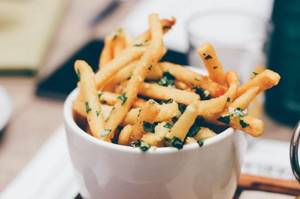
Making golden crispy French fries at home is quite easy. In a saucepan with a thick bottom, the oil is heated to 180 degrees (when a potato block gets into this oil, it should sizzle and float to the surface). Cut into strips, washed, salted and dried potatoes are placed in oil for 3-4 minutes, and then removed with a slotted spoon. Excess oil is removed with a napkin.
Jacket potatoes
Jacket potatoes are potatoes that remain in their skins during cooking. To prepare a vegetable in its uniform, you should select tubers of approximately the same size, wash them and fill them with cold water. The water must be salted so that the potato skins do not crack during cooking. There are other ways to keep the “uniform” safe and sound:
- after the water in which the potatoes are cooked boils, reduce the heat;
- the total cooking time should be about 25 minutes;
- Before cooking, the tubers can be carefully pierced with a fork several times.
The calorie content of 100 grams of jacket potatoes does not exceed 74 kcal. The dish boasts a high content of potassium and magnesium, and is also allowed for consumption during diets.
calories in potatoes - resources for weight loss
If you liked this article, try our newsletter. It's free .
Get the latest information on what works for weight loss delivered straight to your inbox. We do not share your email address. Privacy Policy
Sponsored
The tools and information on the Weight Loss Resources website are intended to help you lose weight and maintain weight and do not provide medical advice. If you have, or think you may have, a medical condition, you should consult your doctor before starting a weight loss regimen and/or physical exercise. If you decide to start exercising after a period of relative inactivity, you should start very slowly and consult your doctor if you experience any discomfort, stress or any other symptoms. If you experience discomfort or pain during exercise, do not continue. The tools and information on the Weight Loss Resources website are not intended for pregnant or breastfeeding women or persons under 18 years of age. Copyright © 2000-2020 Weight Loss Resources Ltd. All product names, trademarks, registered trademarks, service marks or registered service marks mentioned in any part of the Weight Loss Resources website are the property of their respective owners.
.
Baked potato
100 grams of potatoes baked in the oven contain only 80 kilocalories. Among all potato dishes, this option has a fairly low energy value.
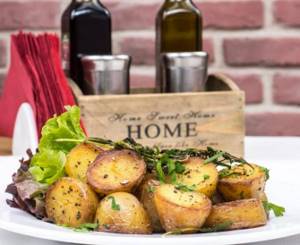
There are many options for preparing baked potatoes:
- classic with golden crust;
- jacket potatoes baked in foil;
- baked wedges (country style potatoes, Idaho);
- potatoes with fillings.
The classic recipe suggests cooking peeled potatoes in the oven for 30-35 minutes at 180 degrees. A golden crust will appear on the potatoes only if each potato is first dipped in oil.
Potato chips
There are so many recipes and ways to make real potato chips. All you need to try each method is 100 grams. potatoes. How much oil and spices to add is up to the cook to decide.

Potato chips can be cooked on the stove, in the oven, or even in the microwave. The classic recipe suggests baking the delicacy in the oven:
- in spicy oil (olive or unrefined sunflower) with garlic and dill, soak potatoes cut into slices for about half an hour;
- potato mugs are laid out on a baking sheet with paper in one layer, you can add salt and pepper if desired;
- the baking sheet goes into the oven preheated to 200 degrees;
- Cooking time for chips: from 20 minutes (depending on how crispy the chips should be).
Potato chips are a very high-calorie product. The calorie content per 100 grams of potatoes is about 500 kcal.
The calorie content of mashed potatoes largely depends on the energy value of the milk added to it and averages 83 kcal per 100 grams.

The algorithm for preparing mashed potatoes is extremely simple. Simply boil the potatoes, mash them and add milk (preferably hot) and a little butter to the resulting mass.
How much do potatoes cost?
Author:
Howmuchisit.org Staff
Last update:
August 14, 2021
Potatoes are one of the most consumed vegetables in the United States. In fact, most Americans eat nearly 50 pounds of potatoes each year, according to the USDA.
How much do potatoes cost?
Depending on the variety of potatoes, costs will range from $1 to $2 per pound on average . Large quantities can cost as little as $2 to $5 per 10-pound bag. The biggest cost factor is the type of potato, time of year and location of purchase. Refer to our table below to see how much popular varieties will cost.
For example, a 5-pound bag of russet potatoes can cost between $3 and $5.
A 5 pound bag of white potatoes can cost between $2 and $4 each.
Fingerlings average $1.50 to $2.50 per pound. Golden potatoes will cost between $1 and $2.50 per pound.
Purple potatoes can cost an average of $1 to $2 per pound, while red potatoes can cost $1.25 to $2.50 per pound.
At Costco.com, a 20-pound bag of baked potatoes costs $4.99, and a 50-pound bag of baked potatoes (US #2) costs $7.72. A 10-pound bag of small red potatoes (US #1) costs $5.54, and a 50-pound bag of small red potatoes (US #2) costs $7.72.
| Type | Price |
| Russet | $2 to $4 per 5 lb bag |
| Creamer | $3 to $4 each |
| Gold | $1 to $2 per pound |
| Mixed Mini Round | $3 to $4 per pound |
| Red | $1 to $2 per pound |
| Pomegranate | $1 to $2 per pound |
| Japanese | from 1 to 2 dollars |
| Jewel | from 1 dollar to 2 pounds |
| Sweet |
What are the additional costs?
When working with fresh potatoes, there are many tools that will make preparation easier. There are many forms of potato cutters that can turn potatoes into chips, fries, or wedges. There are also potato peelers for removing the skins from potatoes.
Helpful Tips:
Fresh potatoes are typically supplied in the following consumer packages: 5-, 10-, 15-, or 20-pound bags. Depending on the variety, three medium russet potatoes or about 10 small white potatoes equal one pound.
Potato bags packaged for public consumption will usually contain information about the contents, including the type of potato, its origin, grade and weight. The bags will also contain nutritional information.
The No. 1 variety in the United States is the variety most often found in consumer packages sold at your local grocery store. Grading standards in the United States change from time to time to keep pace with changes in manufacturing, marketing procedures and consumer preferences.
When purchasing fresh potatoes, choose ones that are firm and have smooth skin. Don't buy washed potatoes because they spoil faster than unwashed, but moderately clean ones.
Avoid buying potatoes that have a greenish tint or tint. They have a bitter taste and can be toxic.
Washing potatoes before storing can cause dampness, which increases the likelihood of rotting.
Store potatoes in a cool place to maintain their quality longer.
How can I save?
Instead of buying loose potatoes, buy bagged straw. Loose bags can cost $1 per pound, while a 5-pound bag can cost as little as $2.50.
Potatoes are also sold at much lower prices at local warehouses. A 50 pound box of #2 potatoes can be purchased for just $5.
Visit dollar stores. Some of them sell bags of potatoes for 99 cents. These will be smaller bags, but still cheaper than chain grocery stores.
.


